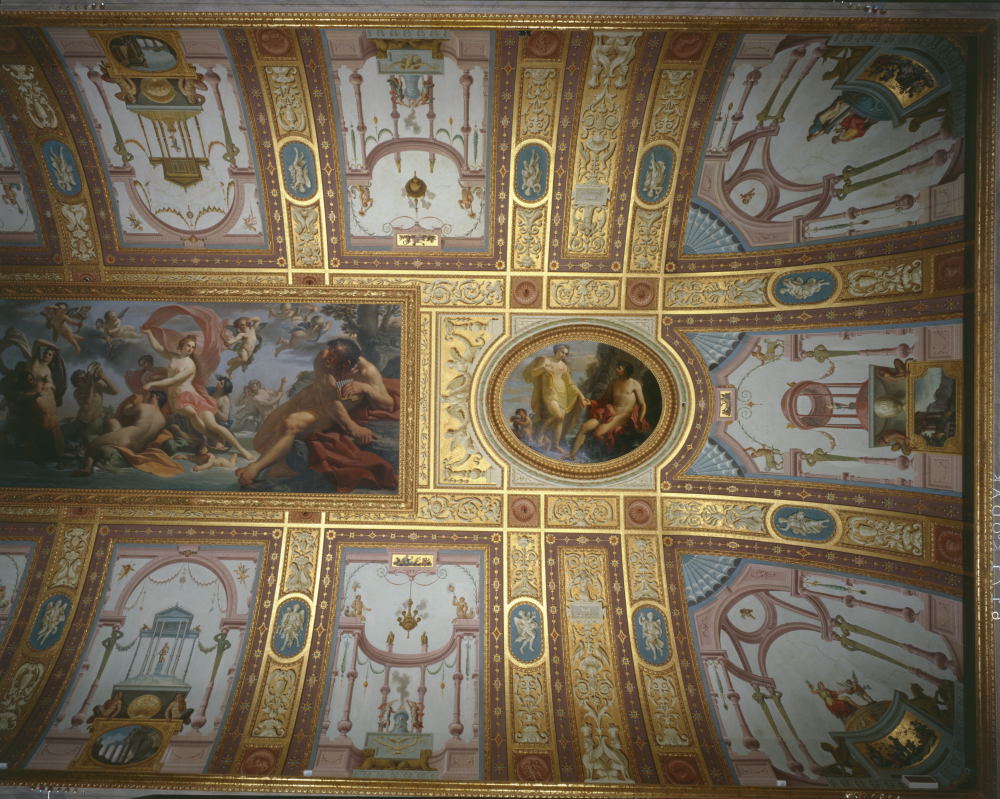Room 4, the Emperors‘ Room
The name of the room – also known as “Gallery“ – derives from the presence of the 18 porphyry and alabaster busts of the Twelve Caesars, with several replicas and the goddess Juno, executed by an anonymous artist of the seventeenth century and placed along the walls at the beginning of the nineteenth century.
The mounting was designed by the architect Antonio Asprucci (1723-1808), who conceived the furnishings based on the juxtaposition of a great variety of marbles.
On the large ceiling are paintings by Domenico de Angelis (1735-1804) based on the vicissitudes of the nymph Galatea as recounted by Ovid in his Metamorphoses (1778 - 1780) . In the centre is The Triumph of Galatea, daughter of Nereus, who is desired by the cyclops Polyphemus (portrayed on the left) and loved by the shepherd Acis (on the right). The two side ovals depict The Jelousy of Polyphemus, who hurls a rock to kill Acis, and Galatea’s Farewell to Acis, who Polyphemus has transformed into a stream.
Inspired by the paintings in Pompeii, the architectural trompe l’oeil is the work of Giovanni Battista Marchetti (1730-1800), while the small oval medallions with the symbols of the Constellations, the circular grisailles with the Signs of the Zodiac, and the personifications of the four seasons were executed by Gioacchino Agricola (active 1758-1795). Beneath the moulding of the ceiling are eleven stucco panels depicting scenes connected with sea gods, which were executed by various artists between 1778 and 1779.
The walls of the room are decorated by four panels with mosaics depicting grottesques alternated with marble pilasters with gilded bronze capitals, in which are inserted frames with stucco cameos on a background of blue mosaic.
There are six niches in the walls with classical sculptures, including the so-called Borghese-type Artemis in Pentelic marble (120-130 C.E.).
The four large marble vases with depictions of putti, Allegory of the Four Seasons, were executed in 1785 by Massimiliano Laboreur (1739-1812) and Lorenzo Cardelli (active in the second half of the eighteenth century). The theme of the seasons also returns in the gilded bronze masks executed by Luigi Valadier (1726-1785), which adorn the precious octagonal porphyry tables.
In the middle of the room is the Rape of Proserpina, the first autograph work of Gian Lorenzo Bernini (1598-1680), who executed it in one year in 1621-22.

